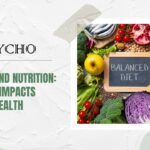OCD and trichotillomania are both psychiatric diseases that cause repeated behaviors, however, they differ. OCD involves intrusive, disturbing thoughts (obsessions) and ritualistic behaviors (compulsions) to reduce anxiety. Compulsions include obsessive hand washing, checking, and counting. Trichotillomania, a Body-Focused Repetitive Behavior (BFRB), causes hair loss due to a compulsive impulse to pluck out hair. Both diseases can create distress and affect everyday functioning, although they focus differently.
The major difference is behavior. OCD requires mental routines to avert injury, whereas Trichotillomania involves hair pulling. OCD sufferers know their obsessions are unreasonable yet use them to calm down. Trichotillomaniacs have desires before pulling hair, yet the act is satisfying. OCD covers contamination, symmetry, and prohibited ideas, whereas Trichotillomania focuses on hair.
The neurological processes behind these illnesses vary. OCD is linked to brain hyperactivity and aberrant serotonin levels. Cognitive processes are crucial because obsessions cause painful interpretations and compulsions as a coping mechanism. Trichotillomania involves a reward system, with hair pulling relieving tension and providing pleasure. Brain regions associated with impulse control have changed in neuroimaging investigations.
Treatment methods vary. CBT plus ERP is the best OCD therapy. ERP reduces anxiety by gradually exposing obsessive stimuli and rejecting compulsions. Trichotillomania is treated with Habit Reversal Training (HRT) to raise awareness of hair-pulling triggers and replace competing reactions. Supplementing these therapies with SSRIs can help both diseases.
OCD contains uncomfortable thoughts and mental patterns based on anxiety, whereas Trichotillomania involves hair pulling for tension reduction and pleasure. To manage symptoms and recover control, precise diagnosis and specific treatment techniques need to be understood by these distinctions.
Also Read: An Introduction to Consciousness: Its History and Theories
Here are 48 differences between Obsessive-Compulsive Disorder (OCD) and Trichotillomania (Hair-Pulling Disorder):
|
S.No. |
Aspects |
Obsessive-Compulsive Disorder (OCD) |
Trichotillomania (Hair-Pulling Disorder) |
|
1 |
Diagnostic Category |
Classified as an anxiety disorder. |
Classified as a body-focused repetitive behavior disorder. |
|
2 |
Core Features |
Involves obsessions and compulsions. |
Primarily characterized by hair-pulling. |
|
3 |
Obsessions |
Persistent, intrusive, unwanted thoughts, images, or urges. |
No obsessions; focuses on hair-pulling. |
|
4 |
Compulsions |
Repetitive behaviors or mental acts performed to alleviate distress caused by obsessions. |
Hair-pulling is the primary compulsion. |
|
5 |
Focus of Concern |
Concerned with various themes or fears, such as contamination, symmetry, or harm. |
Main focus is on hair or hair-related issues. |
|
6 |
Triggers |
Triggers are typically specific obsessive thoughts. |
Hair-pulling may occur in response to emotional distress. |
|
7 |
Repetitive Behavior |
Involves repetitive rituals or mental acts, like washing, counting, or checking. |
Hair-pulling itself is the repetitive behavior. |
|
8 |
Awareness |
Often aware that obsessions are irrational, but compelled to perform compulsions. |
May be aware of hair-pulling but unable to stop. |
|
9 |
Sense of Control |
Often feels a lack of control over obsessions and compulsions. |
May feel a lack of control over hair-pulling. |
|
10 |
Emotional State |
Anxiety, distress, and fear are common emotions associated with OCD. |
Hair-pulling can be associated with tension or frustration. |
|
11 |
Preoccupation with Appearance |
Less preoccupation with physical appearance. |
Preoccupied with hair and hair-related issues. |
|
12 |
Repetition Rate |
Rituals can be frequent throughout the day. |
Hair-pulling can occur repeatedly but may not be constant. |
|
13 |
Duration of Behavior |
Compulsions can take a considerable amount of time daily. |
Hair-pulling episodes can vary in duration. |
|
14 |
Secondary Complications |
May experience physical symptoms due to compulsions (e.g., handwashing leading to skin irritation). |
Hair loss and potential skin damage due to pulling. |
|
15 |
Social Impact |
May lead to social withdrawal due to time-consuming rituals. |
Social impact can result from visible hair loss. |
|
16 |
Guilt and Shame |
May experience guilt or shame related to obsessions and compulsions. |
Guilt and shame may relate to hair-pulling behavior. |
|
17 |
Cognitive Distortions |
Common cognitive distortions include catastrophic thinking and overestimating threats. |
Cognitive distortions related to hair-pulling may involve perfectionism. |
|
18 |
Fear of Consequences |
Fears consequences of not performing compulsions (e.g., contamination). |
May fear the consequences of hair loss. |
|
19 |
Medication Response |
Typically responds to selective serotonin reuptake inhibitors (SSRIs) and cognitive-behavioral therapy (CBT). |
May respond to CBT, habit reversal training, or medication in some cases. |
|
20 |
Prevalence |
Estimated prevalence of about 1-2% of the population. |
Estimated prevalence varies but is generally lower than OCD. |
|
21 |
Age of Onset |
Can start in childhood, adolescence, or adulthood. |
Often begins in childhood or adolescence. |
|
22 |
Specificity of Behavior |
Behaviors vary widely among individuals with OCD. |
Hair-pulling is a specific and defining behavior. |
|
23 |
Control Over Triggers |
May have limited control over triggering obsessions. |
May have limited control over the urge to pull hair. |
|
24 |
Environmental Factors |
Environmental triggers can exacerbate obsessions and compulsions. |
Stress and emotional triggers may exacerbate hair-pulling. |
|
25 |
Insight |
Varies in terms of insight into the irrationality of obsessions. |
May have insight into the hair-pulling but struggle to stop. |
|
26 |
Impact on Daily Life |
Can significantly disrupt daily life due to time-consuming rituals. |
Can disrupt daily life due to hair damage or hair loss. |
|
27 |
Coping Mechanisms |
May use compulsions as coping mechanisms for anxiety. |
Hair-pulling may serve as a coping mechanism for emotional distress. |
|
28 |
Body Dysmorphic Disorder (BDD) |
OCD can co-occur with BDD, characterized by preoccupation with physical appearance. |
Trichotillomania is not inherently associated with BDD. |
|
29 |
Severity Assessment |
Severity assessed based on the impact of obsessions and compulsions on daily life. |
Severity assessed based on the frequency and impact of hair-pulling. |
|
30 |
Need for Symmetry |
Obsessions related to symmetry and exactness are common in OCD. |
No specific need for symmetry is associated with hair-pulling. |
|
31 |
Type of Thoughts |
Obsessive thoughts can vary widely, from fear of contamination to aggressive thoughts. |
No specific obsessive thoughts; the focus is on hair. |
|
32 |
Involuntary Behavior |
Compulsions are often involuntary but driven by anxiety. |
Hair-pulling can be more voluntary but difficult to control. |
|
33 |
Functional Impairment |
Can lead to severe functional impairment. |
Functional impairment can occur due to hair loss but is generally less severe. |
|
34 |
Skin Picking |
Skin picking is a related behavior in some individuals with OCD. |
Skin picking is a separate condition from trichotillomania. |
|
35 |
Fear of Harm |
Obsessions may involve fear of harming others or oneself. |
Hair-pulling is not typically associated with fears of harm. |
|
36 |
Response to Stress |
Symptoms can worsen during stressful situations. |
Hair-pulling may increase during emotional stress. |
|
37 |
Cognitive Therapy Techniques |
Commonly uses cognitive restructuring in therapy. |
Habit reversal training is a key cognitive therapy technique. |
|
38 |
Accommodation by Others |
Family members may engage in compulsions to accommodate the individual’s fears. |
Hair-pulling is generally not accommodated by others. |
|
39 |
Co-Occurrence with Other Disorders |
OCD can co-occur with various anxiety disorders, depression, and more. |
Trichotillomania may co-occur with anxiety and mood disorders. |
|
40 |
Avoidance Behavior |
Avoidance behaviors can be related to specific obsessions. |
Avoidance behaviors may relate to situations where hair-pulling is noticeable. |
|
41 |
Safety Behaviors |
Safety behaviors are often performed to prevent feared outcomes. |
Safety behaviors are less commonly associated with hair-pulling. |
|
42 |
Body-Focused Repetitive Behaviors |
Not classified as a body-focused repetitive behavior. |
A prime example of body-focused repetitive behavior. |
|
43 |
Mindfulness-Based Techniques |
Mindfulness-based techniques may be used in treatment. |
Mindfulness techniques may be used to manage hair-pulling urges. |
|
44 |
Social Stigma |
May face social stigma due to visible compulsions. |
May face social stigma due to visible hair loss or bald patches. |
|
45 |
Cognitive Fusion |
Individuals may experience cognitive fusion with obsessive thoughts. |
Cognitive fusion may be less common in trichotillomania. |
|
46 |
Reward Mechanism |
Compulsions often provide temporary relief, reinforcing the behavior. |
Hair-pulling may offer relief but is not as intricately tied to reward. |
|
47 |
Emotional Processing |
Therapy focuses on emotional processing related to obsessions. |
Therapy may address emotional processing and regulation related to hair-pulling. |
|
48 |
Specific Diagnostic Criteria |
Diagnosed based on specific criteria related to obsessions and compulsions. |
Diagnosed based on criteria specifically related to hair-pulling behavior. |
Also Read: 49 Difference between Obsessive-Compulsive Disorder (OCD) and Post-Traumatic Stress Disorder (PTSD)
Frequently Asked Questions (FAQS)
Q.1 What is OCD?
OCD is a mental health illness characterized by persistent, intrusive thoughts (obsessions) that lead to repetitive behaviors or mental actions (compulsions) to reduce suffering. It affects daily living and functioning greatly.
Q.2 What is trichotillomania?
Trichotillomania is a kind of BFRB characterized by an insatiable need to pluck out hair. This behavior can cause hair loss and is commonly done to relax or enjoy life.
Q.3 How are OCD and trichotillomania obsessions and compulsions different?
Obsessions are painful ideas that cause worry, whereas compulsions are mental processes that reduce it. Trichotillomania focuses on hair pulling, which is satisfying.
Q.4 Can both diseases coexist?
OCD and Trichotillomania can coexist. Despite their similarities, these illnesses have different fundamental behaviors and processes.
Q.5 What causes these disorders?
The causes are unknown, although genetics, brain chemistry, and environmental influences are suspected. These illnesses are linked to serotonin abnormalities and neurological variations.








